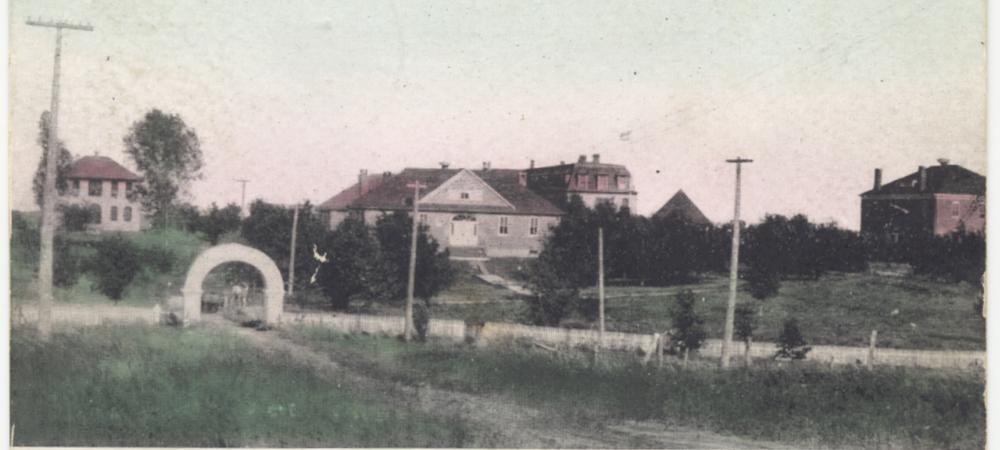
About Morris
- Mission & Vision
- National Rankings
- A Unique Campus History
- Accreditation
- American Indian Boarding Schools in Morris
- Enrollment Management and Institutional Effectiveness and Research
- Native American Student Life
- Native American Student Success Program (NASS)
- Organizational Structure and Campus Governance
- Policies & Administration
- Student Achievement Data
- Student Learning Outcomes
- UMN Morris Land Acknowledgment
Act I: American Indian Boarding School, 1887–1909
The University of Minnesota Morris makes its home on lands first inhabited by the Anishinaabe and Dakota/Lakota people. The first campus buildings housed an American Indian boarding school, first administered by the Sisters of Mercy order of the Catholic Church and later by the United States Government. The school closed in 1909, and the campus was transferred to the State of Minnesota with the stipulation that American Indian students “shall at all times be admitted to such school free of charge for tuition,” a policy still proudly honored.
Act II: West Central School of Agriculture, 1910–63
In 1910 the University of Minnesota established the West Central School of Agriculture (WCSA) on the Morris campus, which educated area high school students in a boarding school environment until 1963. It is this time period that garnered the campus its placement on the National Register of Historic Places as the West Central School of Agriculture and Experiment Station Historic District. Handsome Prairie School structures, such as Behmler Hall and the Education building, built during the WCSA years and designed by well known state architect Clarence H. Johnston, Sr., continue to serve the campus well.
Act III: University of Minnesota Morris, 1960–present
In the late 1950s when the University of Minnesota announced that agricultural schools would be phased out, a grassroots citizens movement convinced the Minnesota Legislature that creating a distinct public liberal arts college within the University of Minnesota System on the Morris campus would be a good investment for the state.
In September 1960 the University of Minnesota Morris opened its doors and began fulfilling its institutional vision to be an affordable, undergraduate, intentionally small, residential, public liberal arts college.
With an enrollment of approximately 1,500, the campus attracts students from 32 states and 23 countries.
The “Morris experience” emphasizes faculty/student collaborative research, study abroad opportunities, and service learning.
UMN Morris is a national leader in green initiatives—wind energy, biomass energy, Pride of the Prairie local, sustainable food projects. Its goal is to be a carbon-neutral campus.
In 2020 the University of Minnesota Morris celebrated its 60-year anniversary and marked the 110-year anniversary of the opening of the West Central School of Agriculture.
Watch Now
Promise of the Prairie, a documentary produced by the University of Minnesota Morris, explores the three very different educational institutions that have all made their home on the same plot of land. Collectively, they form a microcosm of America, informing an understanding of the past, an appreciation for the present, and expectation for the future.